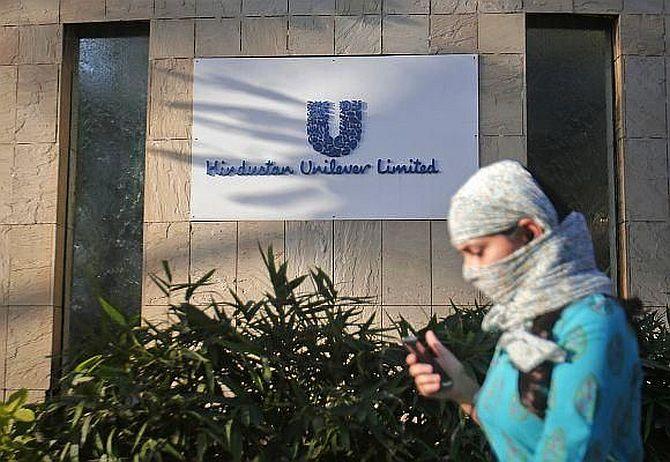Near-term worries will keep HUL stock under pressure

While inflationary pressures will weigh on its profitability, demand pressures – especially in the rural market – are expected to hit the firm’s revenues.
Ram Prasad Sahu reports.
There are multiple near-term worries for the stock of India’s largest listed consumer company, Hindustan Unilever (HUL).
While inflationary pressures will weigh on its profitability, demand pressures – especially in the rural market – are expected to hit the firm’s revenues.
This is why brokerages have cut the earnings estimates for financial year 2022-23 (FY23) by 7-10 per cent.
The demand and margin woes have led to a correction of 15 per cent in the stock price from its February high.
Given consecutive price hikes, the industry demand situation has deteriorated sequentially.
According to Nielsen, categories where HUL is present have reported flat sales (by value) and single-digit decline in volumes in January and February this year as compared to the same period last year.
Volumes for the market leader could fall by 2.5 per cent year-on-year, a first in seven quarters.
HUL’s value growth in the December quarter was 11 per cent, thus outperforming the market growth which was only in mid-single digits.
Similarly, HUL’s volume growth was up 2 per cent YoY while the market’s volume growth was down in low single digits.
A deepening rural and urban slowdown and a margin hit in H1FY23 due to commodity impact of the ongoing Ukraine-Russia crisis have affected the company.
This is why analysts at Prabhudas Lilladher Research led by Amnish Aggarwal have cut FY23 earnings estimates for HUL by 8.2 per cent.
The brokerage firm believes that overall inflation, led by higher food and fuel prices, could impact demand over the medium term.
While brokerages acknowledge the near-term challenges, they are positive on the prospects of the market leader.
“We expect HUL’s core categories to be relatively resilient and the price-value equation of products to continue to tilt towards organised companies leading to market share gains in an inflationary environment,” say Mihir P Shah and Abhishek Mathur of Nomura Research.
They also highlight that the company will benefit from demand rebounding in out-of-home categories and support volumes with increasing mobility as educational institutions and offices open.
The other trigger that could have a bearing on the stock price are reports of the company’s possible talks with spice major MDH for a majority stake.
The acquisition of MDH, which has a stronger base in North India, will mark HUL’s entry into the Rs 24,000-crore organised spice market.
Avendus Research expects this market to more than double to Rs 50,000 crore by 2025, thus registering a compound annual growth rate of 16 per cent.
In addition to strong growth rates, the gross margins of the business are at a healthy 35-45 per cent.
This could boost the overall margin profile for the company.
Given the large market size and growth prospects, HUL is expected to pay a premium for the acquisition valued upwards of 10 times MDH’s FY21 sales of about Rs 1,200 crore or Rs 10,000 crore to Rs 15,000 crore.
At the current price, the stock is trading at about 49 times its FY23 earnings estimates.
Given the demand scenario and the uncertainty on the MDH deal front, investors should await clarity on this before considering the stock.
Source: Read Full Article

